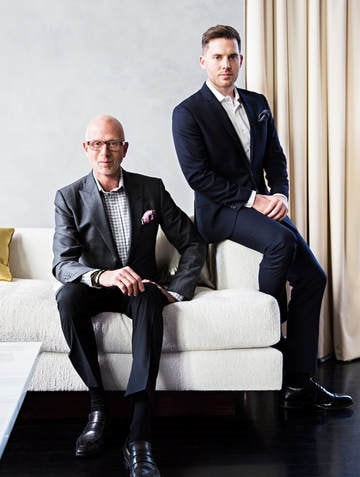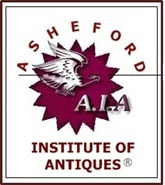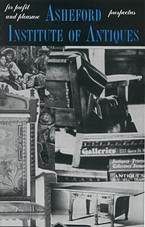 Designers Drake & Anderson Designers Drake & Anderson Florida - Not all interior designers are experts when it comes to antiques, but in this particular case, these two blokes would most certainly be considered exceptions to that rule. Both Jamie Drake and Caleb Anderson are not only well versed in the field of the decorative arts as it relates to interior design, but they're also exceptionally gifted when it comes to understanding the world of antiques as well. Both designers have cut their teeth on some pretty impressive jobs, including former NYC mayor Bloomberg's, Federal style Gracie Mansion, as well as chairing New York's famous Winter Antiques Show. During a recent interview on the state of today's antiques market, the dynamic duo provided some interesting opinions and thoughts on the overall direction of current antique trends and what to potentially collect in the future. When asked about the all encompassing mid-century modern movement, both were quick to note that they felt like the MCM wave had likely crested, and that it was now time to start gravitating to only the very best items one could afford from this period - preferably commissioned or one-off pieces. As with most collectors of this genre, they also questioned the true value in paying for authentic mid-century modern mass produced pieces from the 50's, versus those made today by such companies as Crate & Barrel, since the return on investment for "originals" may no longer be there. However, areas of interest that did seem to intrigue the two designers included many 18th and 19th century antiques, especially when combined with some of today's more modern elements. For many, this gentle turning of the corner in bringing back classically defined antiques into the current design equation has been a long time in coming. For Anderson it's simply about blending some of the older pieces with some of the newer styles. "Even though they’re old, there’s something kind of new about introducing them into projects, since we’re so used to seeing the mid-century products. I always tend to want something old in the room, and I think that layer is important for any interior to make it more interesting," said Anderson. As with most advice related to the field of collecting, both designers were quick to point out the old adage of purchasing what you like, not what you think will be popular. For Drake it came down to one simple rule, "Find something that you’re interested in or passionate about. Don’t just buy something that you think is a good investment, or that a friend told you was the right thing to get. Buy what you find intriguing and will take delight in..." We couldn't agree more. - A.I.A. Staff Writer's  NOTE: For readers seeking more information about the Asheford Institute Of Antiques distance-learning program on professional-level appraising, the study of antiques, collectibles, vintage and mid-century modern items, please click here to visit the school's Home Page. Should you have additional questions about the Asheford program, you can also write to the school at: [email protected] or call the Registrar's Office toll-free at: 1-877-444-4508. Comments are closed.
|
AIA StaffWe're providing our students and reader's with the latest breaking news on events and happenings that we think might be of interest to both collectors and dealers alike. Including changes within the world of antiques, vintage, collectibles and appraising that might just have an effect on your bottom line. We're also interested in hearing from you - so if you've got a great newsworthy story, let us know, and you just might find it here! Archives
July 2024
CategoriesLegal Disclaimer: Extraneous opinions, statements and comments made by individuals represented within these posts do not necessarily reflect those of the Institute. The publication naming of specific business entities, organizations, and concerns, contained herein, in no way represents an endorsement or recommendation of services or products by the Institute. Publicly identifiable information contained herein (including, but not limited to contact information), has been intentionally limited where possible, due to privacy and legal concerns related to the digital dissemination of information through online means. All views expressed herein are those of their respective owners. The Institute is in no way responsible, financially or otherwise, for the accuracy or validity of statements contained within published posts from sources that originate and appear outside of the written and expressed views of those submitted by the Institute.
|

 RSS Feed
RSS Feed




